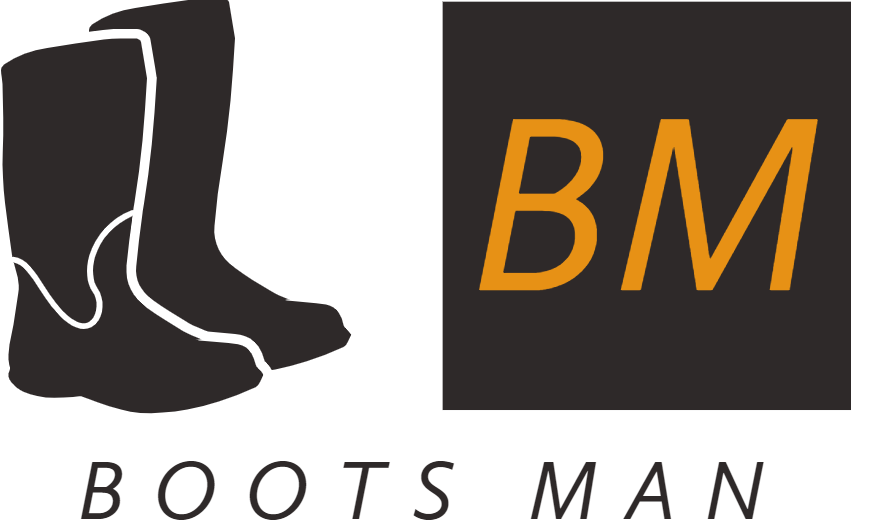Are you an arborist looking for the perfect pair of boots to tackle your next job? Whether you’re trimming branches or topping trees, it’s essential that your feet are comfortable and protected.
This guide will help you find the best boots for tree work and keep you safe!
The practice of tree work is an old one, with a rich and long-standing tradition. It could be said that arborists and related professionals have historically been far ahead of other industries when it comes to emphasizing the importance of safety and comfort.
Arborists in particular face a unique set of hazards on the job that require specialized protective equipment, including reliable boots for tree work. The perfect pair allows them to stay safe and comfortable thanks to features such as non-slip rubber outsoles, steel toes or composite toes, breathable fabric construction, oil resistance and waterproof membranes.
The most important aspect when it comes to choosing the right boots for tree work is figuring out which functionalities fit your individual needs—especially if you’re a professional arborist. Read on as we dive into all the key details in our comprehensive guide to finding the perfect pair!
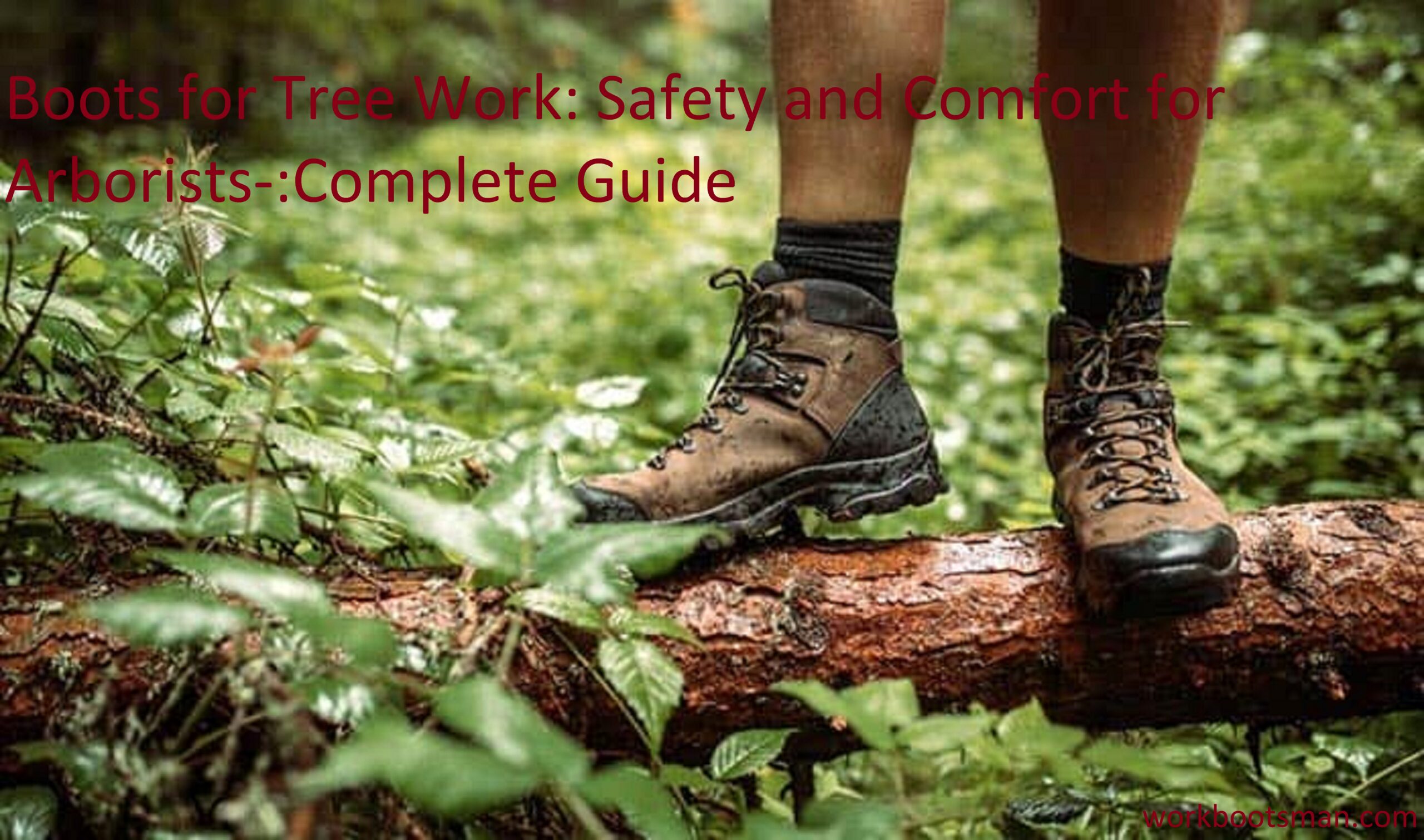
Safety Features of Tree Work Boots
Tree work poses a number of hazards to your feet and ankles. This is why having the right pair of boots is important for any professional arborist. It’s essential that you recognize the limits of your physical endurance when selecting the right pair of boots and make sure they come with good grip, protection, flexibility, and ventilation.
When it comes to safety features, there are several important elements to consider when selecting a tree work boot:
- Material: Look for boots made from durable leather or synthetic materials. This will ensure they are waterproof and breathable while also providing protection from impacts and punctures.
- Grip: Good fit and traction are key aspects of staying safe in tree work boots. Look for rubber soles that provide good grip on wet surfaces, uneven terrain, and slippery branches.
- Padding: Padded collars create a barrier between your foot and the boot ensuring comfort in the field. They also provide added stability by securely fitting to your Achilles tendon when turning or reaching awkward positions
- Ankle Support: Ankle support prevents injuries from both too little action (immobility) or too much (sprains & strains). The higher the boot shaft extends up the ankle portion of your body, the more support it will offer during intense tree work jobs
Durable construction and materials
- Durable construction and materials: When looking for the best boots for tree work, make sure that you pay particular attention to the construction and material of the item. Opt for boots with a reinforced toe box to ensure extra protection against sharp objects and abrasions, as well as thicker leather uppers that will minimize cuts and scrapes. Look for materials such as oil-tanned leather, synthetic uppers, or even a combination of both to provide maximum durability while allowing your feet to breathe.
Adding linings such as felt or sheepskin can provide additional comfort while also helping to maintain water repellency. Additionally, layered mid-soles offer improved shock absorption and will protect your feet from impact damage caused by rough terrain. Cushioned insoles are essential for keeping your feet comfortable during long days on the job but also should be removable so they can dry out faster and help ward off moisture buildup. Finally, good-grip tread is essential when working in wet conditions or on steep slopes throughout the year— look for outsole designs made especially for slipping resistance in these instances.
Slip-resistant soles
Most types of protective footgear for tree work will feature slip-resistant soles. This is especially important because climbing trees can be dangerous, and slipping is one of the biggest risks that arborists face.
Slip-resistant boots are designed to reduce the risk of slipping on wet surfaces and offer greater traction in general; their treads help to grip even on muddy terrain and give you better stability in general. Look for a good sole pattern with aggressive lugs which will work best on ladder rungs, branches, ropes and other climbing surfaces.
A good sole should have an abrasion resistance that ensures longevity while providing adequate support and protection against punctures, jolts and impacts.
Comfort Features of Tree Work Boots
Choosing a comfortable pair of boots for tree work is essential for an arborist’s safety and wellbeing. An uncomfortable pair of boots can distract from the tasks at hand, or even lead to fatigue, slips, or falls. It is important to select the right features in order to ensure comfort while on the job.
There are a variety of features that can be considered when selecting tree work boots:
-Insoles: An insole provides cushioning and support within a boot; thicker insoles can reduce fatigue in pressure points as well as provide higher levels of comfort during long working hours. Look for insoles with good arch support, moisture wicking fabric, and airflow channels that increase air circulation.
-Gripping soles: Tree climbing involves hiking or scaling up and down trees – often on slippery surfaces. To prevent slips and falls, non-slip gripping soles are essential for climbing safety. Look for rubber outsoles with vibration fillers that absorb shock and increase grip on wet surfaces.
-Upper material: The material used for the upper part of the boot should be lightweight so your feet do not become tired easily. Leather uppers are rugged and durable but might be too heavy if you need more breathability; look for mesh fabrics instead which provide greater flexibility while still protecting your feet from debris, moisture or extreme weather conditions.
-Lacing system: A secure lacing system ensures that the boots stay securely fastened to your feet while climbing trees; look out for metal eyelets which will not break apart easily due to extended use or wear-and-tear during outdoor activities like tree work. Elastic laces also provide easy entry into the boot without having to fiddle with traditional laces every time you put them on.
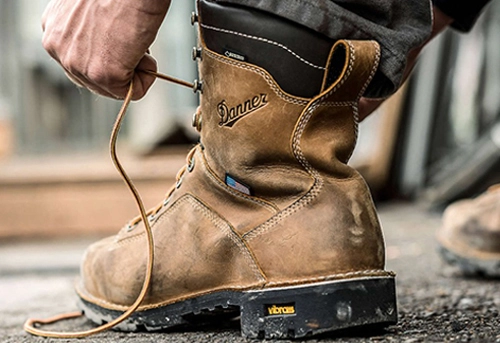
Cushioned insoles
A treeworker’s risk of injury increases with exposure to variable and unpredictable conditions. The right work boots should offer protection from the elements, from tools and debris, and from the ground itself. Cushioned insoles are one important component of a good pair of climbing boots for tree work.
Cushioned insoles are designed to absorb shock, reduce pressure points, and provide arch support — all attributes that can reduce fatigue when you’re climbing or working in a tree. The best cushioning will be shaped to match the contours of your foot, adapting to your every step and movement in order to keep you comfortable throughout the day. Many brands now offer removable insoles made with memory foam that can be taken out periodically to air out or replace if they become worn down faster than expected.
Breathable materials
When it comes to safety and comfort for tree work, materials used in your boots make a huge difference. Breathable materials are essential when working in the heat of summer as air can freely move through them and keep your feet cool. This can be especially helpful if you work around sawdust, insects or herbicides and must also keep your feet dry at the same time.
Synthetic leathers are typically lightweight and have water-resistant coating eliminating moisture from seeping through. Specialized uppers like neoprene combines waterproof capabilities but still allow feet to breathe. Polyurethane or rubber linings make for an even higher level of waterproof breathability; perfect for those wetter days in the woods or unpredictable weather conditions.
Anti-microbial material also helps reduce odors and bacteria build-up caused by sweat, further enhancing foot comfort as you work up a sweat from all that tree climbing!
Moisture-wicking properties
Moisture from sweat or wet conditions can be extremely uncomfortable when climbing trees and can lead to dangerous situations for arborists. To keep your feet dry, it is important to look for moisture-wicking properties in a pair of boots. Materials like Gore Tex, VistaGrip rubber and Hyperion performance leather are all designed to help manage moisture away from the foot.
Some boots feature special fabrics that are even more breathable, such as the Cordura fabric used in some Chippewa models. Ultimately, an arborist should look for a boot that is designed with waterproof but also breathable components.
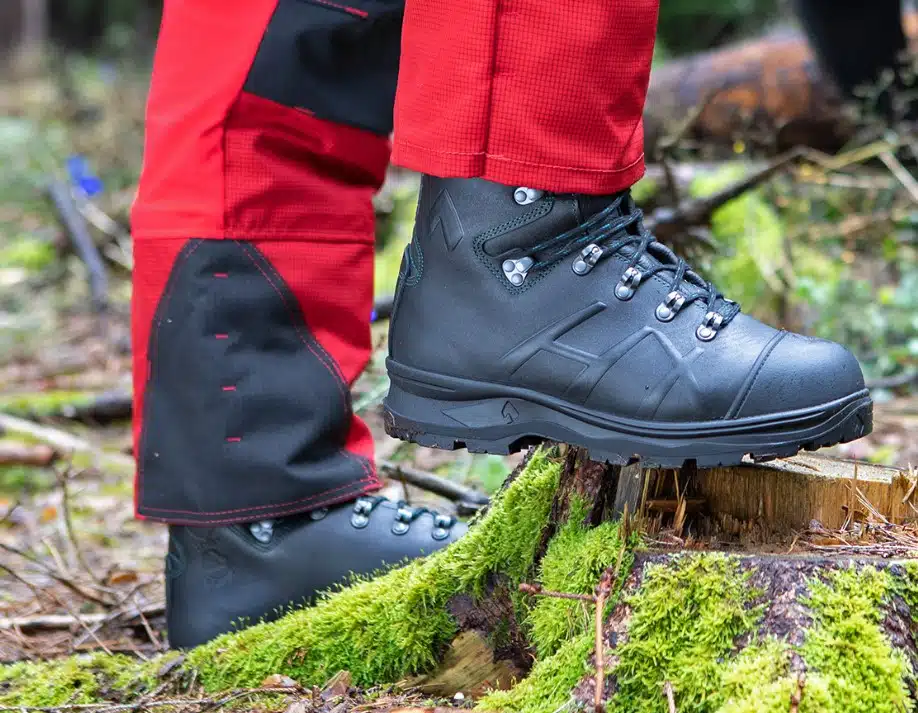
Maintaining Tree Work Boots
Maintaining your tree work boots is important for keeping them safe and comfortable. Properly maintaining your boots can make the difference between uncomfortable, unsafe boots and durable, protective footwear. Here are some essential tips to keep in mind:
- Cleaning – This should be done after each wear or work session. Remove all dirt, mud, grass clippings, leaves and debris from the surfaces. Use a soft brush for tougher stains or spots that need extra attention.
- Drying – Allow your boots to dry thoroughly before polishing or storing them away for long periods of time. Use a shoe tree if you have one to help keep the shape of the sole intact as well as keeping moisture off from inside the boot’s lining
- Conditioning – Keep the leather supple by moisturizing it regularly with a high-quality wax-based cream or lotion made specifically for leather goods and waterproofing spray
- Re-proofing – Treat your boots regularly with re-proofing wax treatment that helps keep out water and prevents them from drying out completely
- Polishing – Regular light buffing can help remove minor surface scratches or marks on your leather uppers
- Storage – Store away from direct sunlight in a cool area such as a closet when not using them
Cleaning and drying
Cleaning and drying your work boots is an important part of maintaining them and will help to extend their life. To ensure that your tree-work boots are clean and dry, follow these steps after each day of use:
- Brush off any dirt, mud or debris that has collected on the surface of your boots.
- Place them in a spot away from direct sunlight to dry.
- Allow the boots to air dry naturally, never using direct heat sources like radiators or hairdryers to speed up the drying process as this can cause damage to your footwear.
- Once completely dry, apply a leather conditioner or waterproofing agent as needed according to the care instructions provided with your purchase.
- If leather is used in the construction of your work boots, consider also applying a leather protector spray for additional protection against water and moisture penetration into seams and stitching for added durability and longevity over time – some sprays offering protection against staining too!
Inspection and repair
Inspection and repair of your gear is an important safety consideration before entering a worksite. You may discover weaknesses or even dangerous defects in the gear that can lead to injury if not addressed. Visually inspect all pieces of gear and conduct any necessary repairs before putting them on or using them. Inspect all hooks, cords, straps, boots, chaps, eye protection, etc. thoroughly. Consider having a professional technician inspect items such as chainsaws and pole saws for any signs of wear or impending failure that could result in injury or loss of property.
It’s important to make sure all straps are secure, buckles fastened and hardware tight enough. Check the soles of your boots for cracks or separations that could cause you to slip while working at height in your climbing harness & spikes. Clean dirt and debris from lace loops and make sure laces are securely attached as well as tightened enough but not too tight – this will ensure the most comfortable fit possible when climbing obstacles with your other equipment such as spikes & lanyards.
Replace any damaged items immediately so they don’t become hazardous while performing tree work duties at height and maintain a good working condition on all gear – better safe than sorry!
Replacement schedule
Replacing your climbing gear is essential to ensure safety and performance. Generally, most tree climbing gear is safe for use for up to ten years providing that it has been cared for properly and inspected each time before use. Despite this, you should replace equipment as soon as any signs of wear or damage are detected. Oftentimes, general wear and tear won’t necessarily impair the effectiveness of your gear, but it could make it more likely that you’ll experience an accident while using it. There’s no better way to guarantee your safety than by investing in newer and better quality items; after all, arborists rely heavily on their tools!
Typically speaking, some components need to be replaced more often than others. These include lines which should be replaced every three to five years depending on the frequency of use. Generally, carabiners also have an average replacement rate of approximately every three to five years depending on usage—some styles are stronger than others so check with your supplier before purchasing. Harnesses should be replaced at least once every seven years with prusik knots generally following suit in terms of replacement schedule. Lastly, boots should be replaced periodically—look for staples in soles for signs of wear and tear.
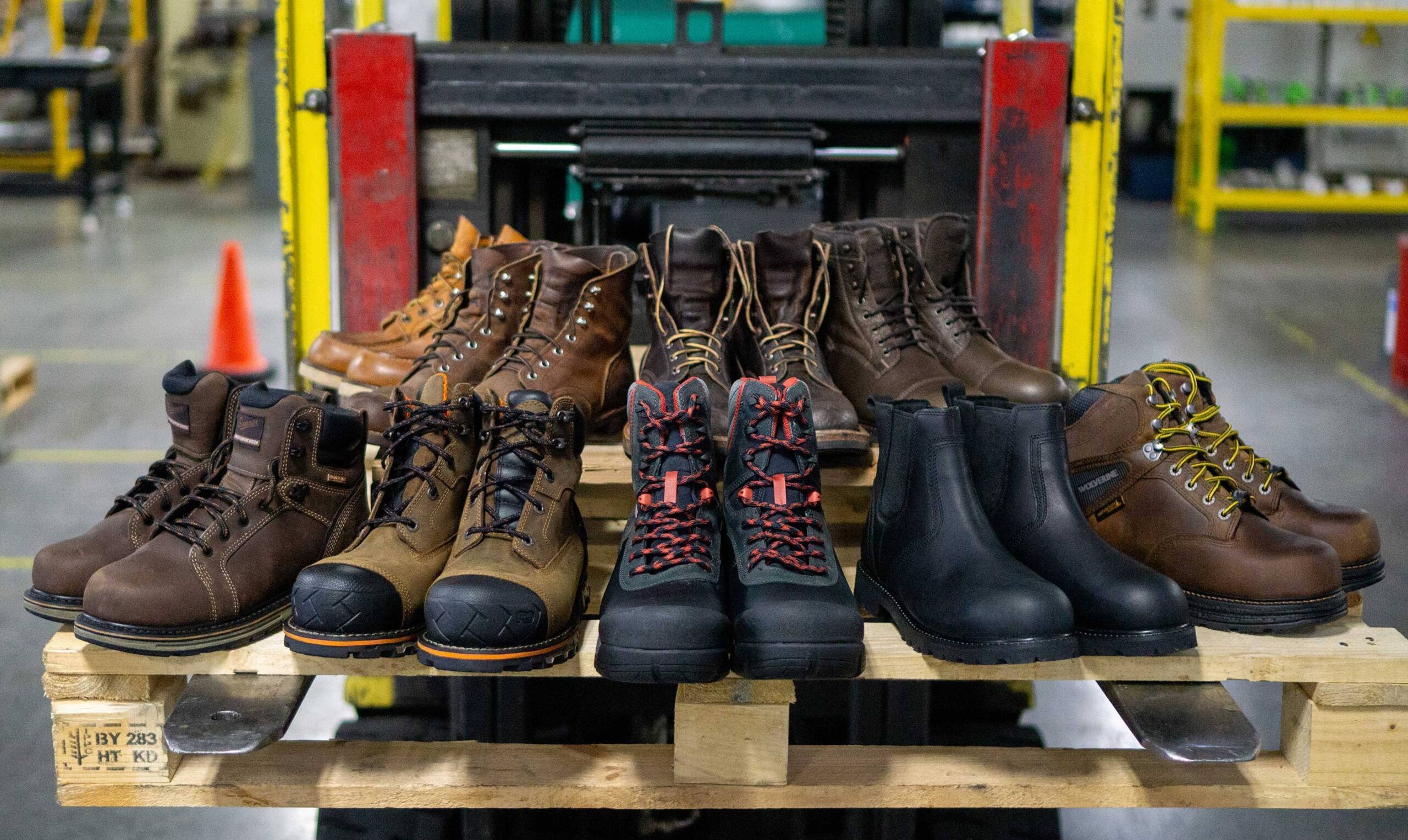
Conclusion
In conclusion, choosing the right type of tree gear can make a big difference when it comes to safety and comfort while climbing. It is important to understand how the different components of a full set of tree gear work together to provide support and protection. Proper fit is also essential in order to ensure that the climbing harness, harness straps, lanyards and other components fit correctly for optimum performance.
Having quality, reliable tree gear is essential for protecting yourself and others from risks that are encountered in treework activities. Ultimately, having the right set of tree gear can help you tackle any treework job with confidence and peace of mind.
FAQs
What shoes do arborists wear?
Arborists typically wear sturdy, protective work boots with good traction and ankle support. These boots are designed to provide the necessary grip and support for climbing trees and working at heights.
What do tree climbers wear on their feet?
Tree climbers also wear similar work boots with good traction and ankle support, but they may also use specialized climbing shoes that are specifically designed for tree climbing. These shoes often have spikes or crampons on the soles to provide additional grip on the bark of the tree.
What do arborists use to climb trees?
Arborists may use a variety of climbing equipment to ascend and descend trees, including ropes, harnesses, carabiners, and ascenders. They may also use ladders, aerial lifts, or other equipment depending on the specific job and tree.
Who are the best arborists in the world?
It’s difficult to determine who the best arborists in the world are, as there are many skilled professionals working in this field. However, there are several organizations, such as the International Society of Arboriculture, that recognize and certify arborists based on their knowledge and expertise.
Should I use shoe trees in work boots?
Using shoe trees in work boots can help maintain their shape and prevent wrinkles and creases. It can also help absorb moisture and odors, which can extend the life of the boots.
Do shoe trees work in boots?
Yes, shoe trees can work in boots, especially if they are designed for larger sizes or specific types of boots. However, it’s important to choose a shoe tree that fits properly and is made from quality materials to ensure effectiveness.
How do I choose a shoe tree?
When choosing a shoe tree, consider the size and shape of the shoe, as well as the material and construction of the shoe tree itself. Look for a shoe tree that fits snugly but not too tightly, and is made from quality materials like cedar or other hardwoods.
Why do arborists wear helmets?
Arborists wear helmets for protection against falling debris, branches, or other hazards while working in trees. Helmets can also protect against sun exposure and other environmental factors.
Does the type of shoe tree matter?
The type of shoe tree can matter, as different types may be better suited for specific types of shoes or materials. For example, cedar shoe trees are often recommended for leather shoes, while plastic or metal shoe trees may be better suited for sneakers or athletic shoes.
What to wear when climbing trees?
When climbing trees, it’s important to wear comfortable, breathable clothing that allows for freedom of movement. This may include long pants, a long-sleeved shirt, and a harness or other safety equipment. Additionally, appropriate footwear, such as sturdy work boots or specialized climbing shoes, should be worn for protection and grip.
See Also:
- Best boots for yard work 2023
- Best carhartt work boots 2023
- Best carpenter work boots 2023
- Best cold weather work Boots 2023
- Best composite toe work boots 2023
